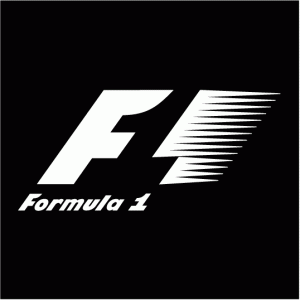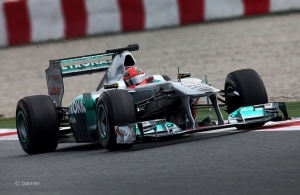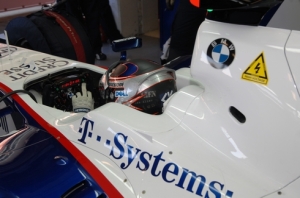2011 was the 61st Formula 1 season. Taking place on 5 continents, races in over 15 countries and drivers from over ten nations, it was a global affair. 5 was the number of rookies starting the season in Australia, and 5 was also the number of current and former world champions on the grid. Rules are something which have not stayed stable in recent years, and the addition of new fast-wearing Pirelli tyres as well as DRS, and the bringing back of KERS, was all to aid the racing. This was all seeming to set the scene for a year of wheel-to-wheel combat all the way to the season finale in Brazil come November. However, one man was to throw a patchy 2010 behind him and utterly hush his critics on the path to a second world title. Here are the main stories.
Sebastian Vettel
The reigning champ was, perhaps no surprise to some, German. Sebastian Vettel stamped an emphatic 11 race wins and an unprecedented 15 pole positions on the season. Prior to the season’s start, there were some doubters in his camp. The year previous saw him make a number of bizarre errors which tarnished his title in the eyes of some. When the time came, he answered the call. On more than one occasion, with such little time remaining on the qualifying clock, he repeatedly showed his class with pole after pole. Never qualifying below 3rd on the grid, and finishing on the podium an astonishing 17 times in 19 races, it truly was the year of Sebastian Vettel.
Jenson Button
Second behind Vettel in the championship was England’s Jenson Button. His move from title-winning team Brawn GP at the closure of 2009 was seen by all to be a strange move. Going from the comfort and security of his 7-year stay at Honda/Brawn to the hotbed of McLaren, seen as Lewis Hamilton’s team, was a very risky move. Button was regarded as being consistent but lacking in ultimate pace and overtaking prowess against Hamilton, a steady number two driver. A man who could support Hamilton and his team against the rest without being a direct threat to Hamilton’s superiority. 2010 was a close year between the two but Hamilton came out on top, with 3 race wins to Jenson’s two and finishing above him in the World Driver’s Championship. 2011 however, was a different story. Whilst Lewis was more consistent in incidents than clean driving, Button racked up the points, becoming the first team-mate of Hamilton’s to beat him in the Driver’s Championship. It was the year in which the man from Somerset was finally regarded as a serious front-runner in the sport and a potential threat to Vettel’s dominance.
Pirelli
Unlike on a road car, tyres in motorsport are generally designed to last for short periods of time. The long-time Japanese tyre manufacturer Bridgestone departed from the sport at the end of 2010, giving way for the Italian Pirelli company . The comparable long-life boots of the Bridgestones were gone as Pirelli were encouraged to produce tyres that did not go the distance and instead, wore rapidly. This came and forced the teams to come up with different strategies and make more pitstops. The idea was to produce exciting racing as a driver on old, worn, slower tyres came up to pass a driver on a fresh, new, grippy set, and it worked. The company were commended for their efforts and did help to improve the racing. However, as with all changes, the drivers and Such tyre battles saw Lewis Hamilton make an on-track pass on Vettel for the lead at China and a thrilling final lap showdown in Canada between Button and Vettel. Teams were soon quick to discover how to extend the life of them and in doing so giving Pirelli a bit of a headache as their work was becoming undone. In order to reverse this, they must go even more extreme for 2012.
DRS
The Drag-Reduction-System (DRS) was seen as the biggest change in pre-season. Typically, air flows over the car’s front and rear wings at different speeds. The wings work in a similar way to those of an aeroplane, except whereas on an aeroplane they help to generate lift, on a racing car, they allow it to stick to the track. They generate sufficient levels of downforce for it to be theoretically possible to run a car upside down. Turbulence is often an issue which creates drag. Drag slows the car down and takes away downforce. In order to combat this, the DRS system adds downforce at the touch of a button once the driver is less than one second behind another car.It’s down by a flap opening on the rear wing when pressed, and this flap is closed once the driver brakes for the corner.This gives him a speed advantage of less than 10mph, a significant different when both cars were travelling at the same speed before the rear wing was opened. Before the season began, there were safety concerns, as if a driver came up to a corner and the flap failed to close, there would be potential for a serious accident. There were a few slight instances of the flap being open when it shouldn’t, such as Fernando Alonso’s Ferrari in China, but there were thankfully no incidents as a result. The system was deemed a success, producing many overtakes, including ridiculous amounts at the Turkish GP. However, despite fears of artificial racing by some and the Wacky Races that it at times did create, it did the job which it was brought in to do and can be tweaked for the future.
KERS
The technique known as Regenerative Braking is not brand new to either F1 or road cars. It is a system where energy is stored by braking, with this energy stored in an electric motor and used when the car is in an electric mode. Road cars such as the Toyota Prius and Honda Insight have been using this for many years. F1 had past used it for just one season, in 2009. It gave a 60 kilowatt (Kw) increase, equating to 80 horsepower (HP) which could be used for a total time of 6.7 seconds per lap. Despite all the hype surrounding it, 2009 saw it become a failure for the most part. Whilst testing the system in 2008 in order to be ready for the next year, the Red Bull team suffered a scare when a KERS battery caused a fire scare requiring the entire factory to be evacuated. A few months later,a BMW mechanic received a minor electric shock upon touching Christian Klien’s car.
During the following season, only 4 teams, those being Ferrari, McLaren, BMW and Renault used the system, while BMW and Renault stopped using it mid-season as they failed to see the benefits. McLaren managed to get the KERS working best of all thanks to the system supplied by their engine-supplier Mercedes. The British team achieved the first win by a KERS-equipped car at the Hungarian GP in July. Ferrari’s Kimi Raikkonen won the Belgian GP in August, while the man finishing behind him, Force India’s Giancarlo Fisichella, stated Kimi managed to stay ahead thanks to KERS. 2010 left the teams free to use the “battery boost” if they wished, but all 12 teams choose not to.
It returned in 2011, and with the minimum car weight limit raised by 20Kg, the weight-penalty of the system was less of a hinderance. All but the 3 “teams” choose to use it, those teams being Lotus, Virgin and HRT. It helped to produced the overtaking moves which it was brought in to do, and with multiple uses, including aiding defensive driving,2011’s comeback was seen as a much bigger success than the initial teething pains of 2009.
Leave a comment
No comments yet.






Leave a comment